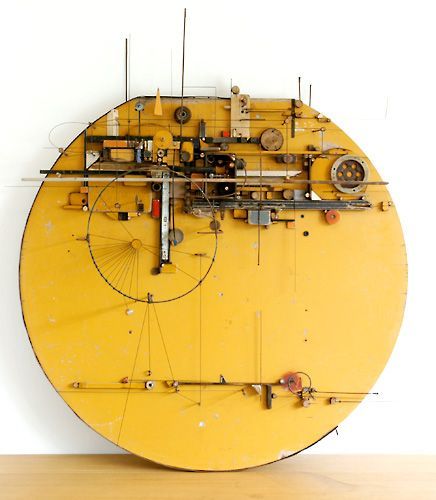
Mitsugi Sato (佐藤貢, b. 1971, Osaka) is a Japanese contemporary artist whose practice is deeply rooted in the act of collecting and transforming found objects—particularly marine debris—into poetic, often frame-like assemblages that blur the line between object and image.
🌏 Biography & Artistic Journey
- Early Life & Education – Sato studied at Osaka University of Arts but left before graduating.
- Wandering Years – In the mid-1990s, he embarked on extensive travels through China, other Asian countries, the United States, and Latin America. These journeys—sometimes described as near-death wanderings—shaped his philosophy of living and making art.
- Life in Wakayama – Returning to Japan in 1998, he settled on a beach in Wakayama. Initially sleeping under eaves and on rocks, he began creating works from driftwood, fishing gear, and other washed-up materials, inspired by the Aboriginal idea that “what you need comes from the other side”.
- Artistic Realization – Over time, the frames he built from these objects began to “erode” the paintings they surrounded, until the found materials themselves became the entire work. Sato has said, “While picking up the drifting objects, I realized that I was the drifting objects”.
🖼 Exhibitions & Recognition
- First Solo Show – 2005, iTohen (Osaka), followed by traveling exhibitions in Tokyo and Nagoya.
- Notable Exhibitions –
- Waltz (2007, iTohen, Osaka)
- 108 Crosses (2019, Gallery NAO MASAKI, Nagoya)
- ALIVE: The shape of live, the expression (2020)
- Group Shows – Participated in major group exhibitions such as Position 2012 at the Nagoya City Museum of Art.
- Triennale Participation – Featured in the Oku-Noto Triennale 2020+.
📚 Publications & Writing
- Sato has published autobiographical works reflecting on his unconventional life, with the first volume released in 2014 and the second in 2016.
🎨 Artistic Themes & Methods
- Materiality – Works are composed of driftwood, fishing nets, buoys, and other ocean-borne debris.
- Philosophy – His process is less about “making” and more about “receiving” what the sea offers, embracing impermanence and chance.
- Continuity – Even after moving to urban environments, Sato continues to collect and create from discarded materials, maintaining the ethos of his beach years.